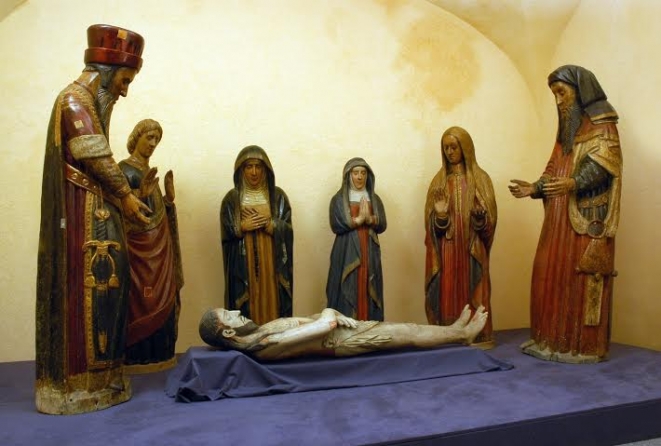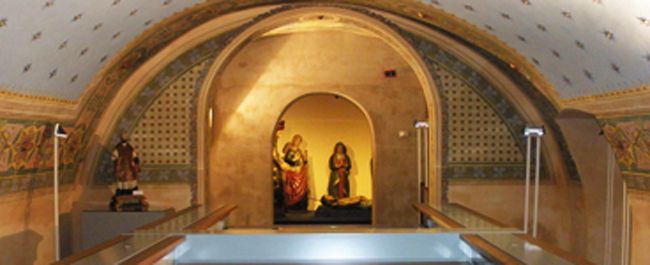The Duomo Museum of Cagliari
A journey back in time between art and history
The walls of the Castello of Cagliari (Castedd 'e susu , the upper castle) hold a precious site of sacred art, the Cathedral Museum.
Along the Fossario you can admire the city panorama in all its beauty, a prelude to the wonders contained in the museum. The exhibition structure is derived from the premises of what were the seminar and the prisons.
Restored with funds from the Jubilee, after the intervention of the director, Ing. Maria Lucia Baire, the museum was opened in 2004 to show the precious heritages held, for long time, in the Cathedral of Santa Maria.
The exhibition opens with the sculpture group, The Mourning of Christ, life sized, hold in a small room called the Lamentation. The seven statues, dated around the end of 1400, made of polychrome wood, are of Catalan School. The similarity with the group of Santa Ana of Barcelona suggests that to produce them have been used preparatory cartoons to allow a faithful reproduction. The sculpture of Christ, instead, is of a later period.

In the hall of the vaults, where one of the walls dates back to the first plant of the cathedral, which took place in the Thirteenth Century, the cover consists of a sequence of groin vaults adorned with pendulous gems where are carved figures of Saints and the Virgin.
Here are exhibited the Retable of the Beneficed, an altarpiece dating from around 1527, attributed to the brothers Cavaro, but very probably painted by more hands. It is in fact easy to recognize in two tables recalls of Michelangelo's Sixtine Chapel, while the figure of the Madonna has, however, a Raphael's compositional layout.
Beside the altarpiece you can admire the great Processional Cross (XV-XVI century) manufactured in Cagliari, which was carried in procession on the feast day of Corpus Domini and the Assumption until 1948.
Placed between the two works, is the Triptych of Clement VII, painting of the Flemish School dating from the late Fifteenth Century, attributed to Rogier van der Weiden. This is made up by a central panel depicting Our Lady of Sorrows and Christ crowned with thorns and two side panels. On the left one are represented the Madonna and Child with St. Anne, while, on the right St. Margaret with the Dragon.
Stolen from private residence of Clement VII during the Sack of Rome, it was given back by a Landsknecht soldier, then donated to the Cathedral of Cagliari by the Pope himself, so that it was exposed during the celebration of the Assumption.

In the room called "degli Argenti" are bequests archiepiscopal, objects of liturgical use, many silvers that are unique pieces, some of which are still in use as the Sixteenth Century oil amphorae still used by the bishop during the oils blessing of Holy Thursday. For the most part, these furnishings religious were made by the School of Cagliari.
In the room stands an ostensorium late neoclassical gilded silver, donated by the French King Louis XVIII in memory of his wife Marie Louise of Savoy, buried in the crypt of the cathedral.
The museum, through a set of stairs, or a lift with a breathtaking view (wheelchair-accessible) offers the opportunity to visit the underground levels allowing visitors to walk through a long and important part of the history of Cagliari.
Currently, the museum organizes several educational workshops, night tours and special openings, a welcome sign characteristic of the museum organization.
Museo del Duomo di Cagliari
Via del Fossario 5
Phone (+39) 070 68 02 44
http://www.museoduomodicagliari.it
email: info@museoduomodicagliari.it
Openings: Open 16:30 - 19:30, Sat, Sun 10:00 - 13:00, 16:30 - 19:30. Closed Mon.
Price: Admission €4; 8-12 and over 65 €2.50; under 8 free.